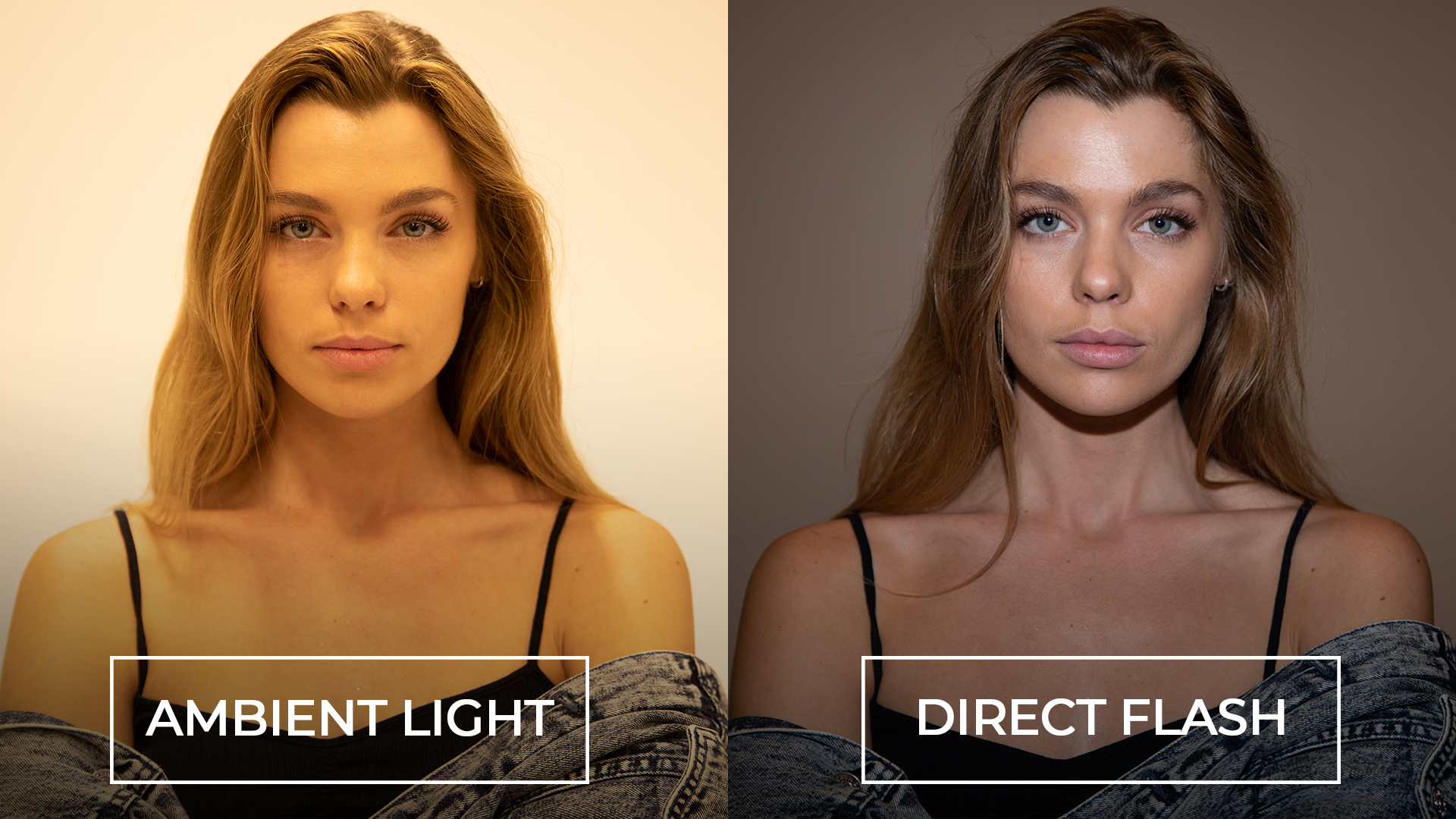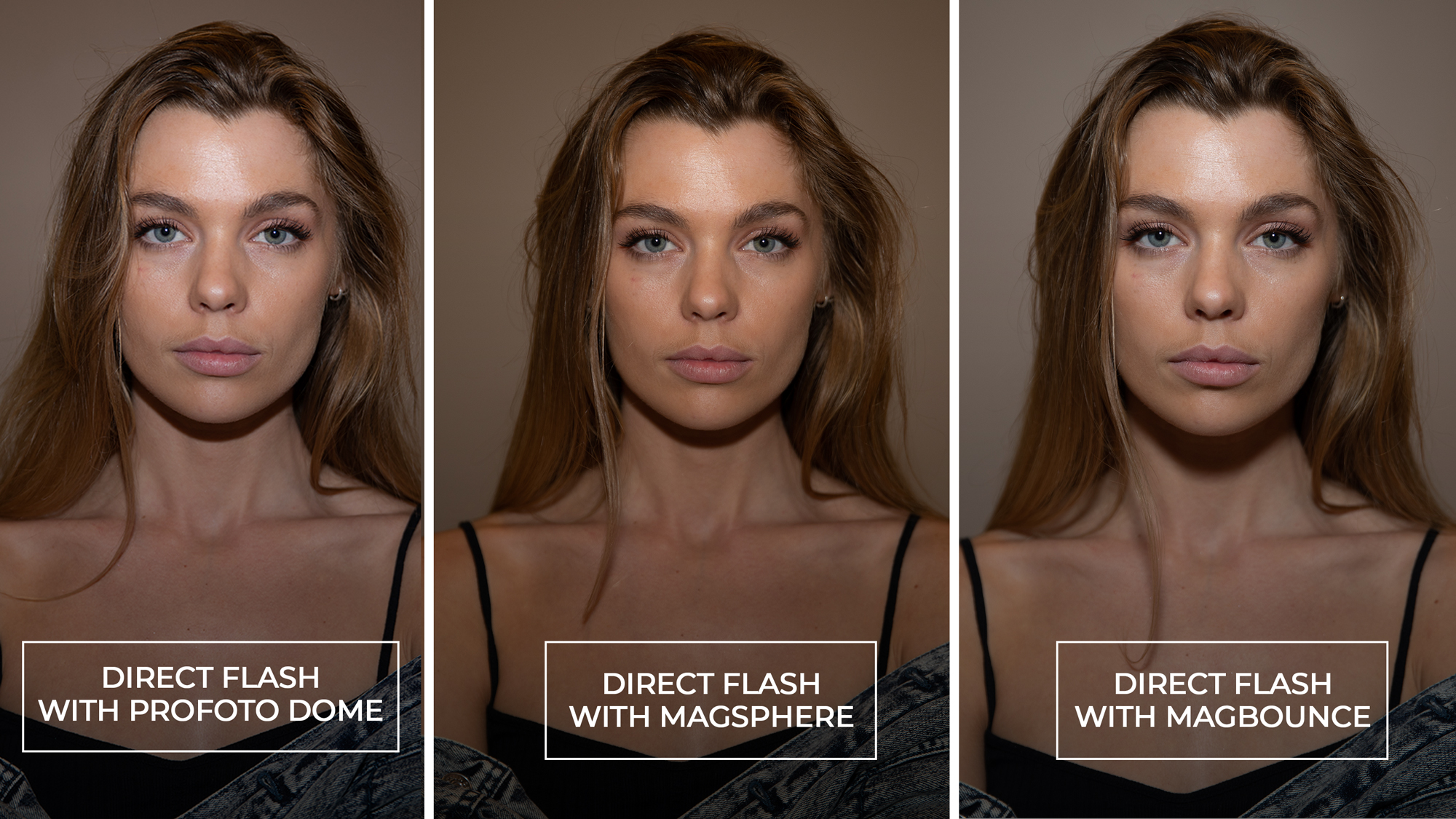Whether you’re capturing an intimate wedding moment, a high-energy fitness session, or a timeless portrait, getting the lighting just right is essential. One of the most versatile and accessible lighting techniques for photographers of all levels is bounce flash. By redirecting light from your flash to a surface, you can create soft, flattering, and natural-looking light without the need for heavy or expensive gear. In this article, we’ll explore how bounce flash can be used in various settings to enhance your images, showing real-world examples from wedding, fitness, and portrait photography.
Video 1 | Direct Flash vs. Bounce Flash
In this video, we’re doing a throwback to one of our favorite tutorials from Lighting 101. We’re going to cover the difference between direct flash vs. bounce flash and give you an easy secret to creating soft, flattering light anywhere you go.
Gear You’ll Need for This Technique
Bounce flash photography can be done with any type of on-camera flash. Here are some of the other gear items you’ll need to complete the look:
- On-Camera flash – see our favorites here! For this tutorial, I am using the Profoto A1x
- 5-in-1 Reflector
- 40 in. Matthews C-Stand
I am using a Canon 5DM4 and a Canon 24-70 f/2.8, but feel free to use whichever lens and body combo you prefer for portraiture. Through this video, you’ll see the progression of learning, starting with no flash on camera using just the ambient light to then manipulating our on-camera flash to yield the most flattering light.
Direct Flash
Direct flash has a very distinct purpose and looks when used correctly. Often times, amateurs point the flash straight forward because they want to fill the face with light in dark situations make the subject look like a deer in headlights.
It looks hard and specular, and although it is an improvement from our ambient light image, it isn’t the most flattering way to utilize an on-camera flash. Now let’s try using different modifiers to see if it can soften the light.
We used the Profoto Dome Diffuser, the MagMod MagSphere and the MagBounce to test and see which would get us the best result. The MagBounce gives us the best results out of the three, but it’s still not looking quite right with that right highlight on her forehead. Now that we see the limitations of direct flash, let’s discuss bounce flash.
Bounce Flash
We’re just going to turn the flash now so it’s no longer being directed at our subject and we’re going to bounce it off a neutral color, like white or grey. For the sake of demonstrating this video, and offering an alternative to those of you that may not have a ceiling or white object to bounce off of, we are using a scrim to create that white surface.
You can see automatically, our light quality and direction has vastly improved. There are no longer any harsh highlights on her face and the shadow beneath her chin is softer and gradually falls off. To improve upon this, even more, let’s move the location of the scrim behind me so that I am throwing my light directly towards the subject by bouncing behind me. This is the final image we get:
If you don’t have a scrim with you, the best thing to do is to find a white wall to bounce off of. This bounce flash technique is going to save you in scenarios where you don’t have the ideal location.
Video 2 | Using Overhead Bounce to Create Dramatic Lighting
In this video, Pye demonstrates the purpose of bouncing light overhead as a means of creating interesting definition and powerful highlights. With just a simple adjustment in position, your flash is modified to produce directional and controlled light.
Tips for Bouncing Flash Off Ceilings and Overhead Objects
To help reinforce the education in the video above, here are a summary of the tips presented in the video with visual examples.
1) Make Sure Your Ceiling is White for Best Results

Since our light is being bounced off of the ceiling, we want to make sure that there is no color being transferred into our scene. Your best bet to ensure this is to bounce light off of a white ceiling or use a v-flat in order to lessen the amount and spread of light dramatically. Aiming the flash directly at your subject fills in all shadows on the muscles therefore reducing the appearance of tone and definition.


Use a Snoot/Grid and Flash Zoom To Modify Light Spread
Now that we have our bounce prepared we can focus on the spread of light we desire. By changing the zoom settings on your flash, you are concentrating the light on a specific portion of the ceiling or v-flat without having it spread across. We can also modify and pinpoint our spread of light by using a Snoot or a Grid, the latter being easier to use because generally we are not bouncing far enough to use a Snoot.
Watch for Bright Non-Colored Surfaces vs. Reflective Surfaces
Bouncing light against a bright white surface will result in more diffused light being spread. Using a reflective surface, such as a silver reflector, will produce a more specular light. For this shot, the specular light was better because the harsher shadows show more definition in the muscles.

Infographic
For your convenience, we’ve summarized the information presented in the video with the infographic below. Feel free to pin or save the photo for future reference.

Bounce | Flash Wedding Example 1

Although we’ve repeatedly listed bounce flash as one of the last go-to options for lighting a scene, there are some scenes that benefit greatly from this type of light source.

In this New Year’s Countdown image, there were DJ lights and other light sources from the exploding confetti canisters. We didn’t feel the need to add additional rim lights, and the bounce fit this scenario perfectly. Spotlighting can be risky in a one-chance must-have moment like this.

If you’re trying to take multiple shots at a higher flash power, we recommend using a battery pack to miss fewer shots (see above). Even with a battery pack, you may still expect to miss a shot here and there.
TIP: It doesn’t have to be New Year’s Eve to capture this image.
To capture the shot, elevate your position (stand on a chair, for example, with your shoes off), and aim the on-camera bounce flash up and forward so that the light can reach as far back as possible. For other settings, see the diagram above.
Bounce Flash Wedding Example 2

While using a bounce flash requires a minimal setup time of under a minute, it also requires a neutral-color ceiling/wall, which makes it less ideal than pinned OCF. Rim lighting can be added if using the on-camera bounce flash as a master, and setting up the rim lights and stands will add a minute or two to the overall setup.

Because your light source is on-camera, your range of movement is limited. If you back away from your subjects, for example, then less light will reach them. At the same time, the subjects closest to the light source will be brighter than those in the background. In the instance of capturing a bouquet or garter toss, this means that the bride and groom (if positioned closer to the camera) will be brighter than the group of participants in the distance who are trying to catch the bouquet or garter. This is fine if you’re focusing on the bride and groom, but it’s less than ideal for lighting the group when it is time to focus on them for catching the flying objects.
Hopefully, the bounced light will be strong enough to adequately light the group. You can aid this by bouncing the light up and to the side so that it doesn’t fall as strongly on the closer subjects (usually the bride or groom).
Here are some key tips for capturing the bouquet and garter tosses with bounce flash:
- Bounce = higher power (1/4th to 1/8th)
- External battery recommended (for faster recycle times)
- Higher ISOs (allows for lower flash power & faster recycle times)
- Bounce to cover back group
- High action = more clicks
- Watch shutter speed/ambient
- Toss bad expressions
Even though these moments are candid in nature, photographers can (and should) guide the couple and participants into a position that is going to look great in the photos. Here’s how it should happen:
- Choose the direction you want to shoot
- Place the bride and/or groom (or both)
- Place the group
















